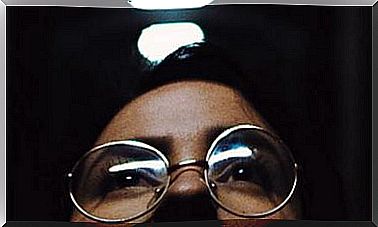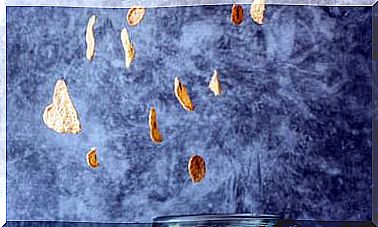Medicinal Plants, Nutrients And Exercises To Take Care Of The Eyes
Some substances found in food and medicinal plants have a beneficial effect on the structures of the eye, which can also be strengthened through exercises.

Some plants and foods provide nutrients and substances that have a beneficial effect on the eyes. You can include them in your menus and in your health rituals to take care of your eyes and prevent common disorders. You can complete its effect with exercises to train the muscles of the eyes.
Plants that benefit the eyes
- Green tea ( Camellia sinensis ). Its polyphenols protect the cells of the retina from damage caused by ultraviolet solar radiation. You can take 3-4 daily cups of the infusion.
- Coleus ( Coleus forskohlii ). This plant from the mint family can reduce intraocular pressure and improve dry eye. A usual dose is 2 capsules of 125 mg extract daily.
- Ginkgo ( Ginkgo biloba ). It improves the blood supply to the retina and may improve vision in glaucoma. You can take up to 240 mg of the extract daily.
- Eyebright ( Euphrasia officinalis ). You can prepare an infusion (40 g per liter), strain it through a coffee filter, and use it to wash your eyes. It is used to reduce inflammation and clean.
Foods that protect the eyes
- Carrots: They are rich in beta-carotene, which the body converts into vitamin A, essential for the good condition of the cornea. It is also a component of rhodopsin, a substance that promotes vision in low light. Yellow, orange and green vegetables are to be rich in beta-carotene.
- Sunflower seeds: They provide the antioxidant vitamin E, which prevents age-related cataracts. In addition to sunflower, foods rich in vitamin E are avocado, walnuts and other dried fruits.
- Red pepper: Provides vitamin C, which fights oxidation and favors the formation of collagen, necessary for the regeneration of the cornea and sclera. Fresh vegetables contain vitamin C.
- Spinach: They are rich in lutein and zeaxanthin, pigments that protect the retina. Taking 15 mg of lutein, three times a week, can improve vision affected by cataracts.
- Chickpeas: Legumes and nuts are rich in B vitamins. Optimal consumption has been linked to a lower incidence of age-related macular degeneration, cataracts, and glaucoma.
The most effective gymnastics to take care of the eyes
Eye gymnastics exercises remove tension from the muscles that control focus, improve visual acuity, and prevent eye fatigue.
Change of perspective
This exercise is especially effective for people who suffer from presbyopia or who spend a lot of time in front of a computer screen. It consists of focusing alternately on a distant object (more than 6 m away) and a close one (30-40 cm).
Repeat the focus shift about ten times and hold the focus for 20 seconds. It is advisable to do it every 20 minutes of work.
Roll your eyes in all directions
With your head still, look up for three seconds and then down. Repeat four times. Do the same but looking to the right and left. Then do it diagonally. Finish by tracing circles with your eyes. Bring your eyes to the limit of the field of vision, but without forcing them.
Apply heat
You can do it twice a day, once in the morning and once in the evening, to loosen the tissues and increase blood flow and the arrival of nutrients to the eye.
You can do this by rubbing your hands and placing them cupped over your closed eyes. You can also put on a towel soaked in warm water or use a gel mask for this purpose.
Eye yoga: treatka, a millenary practice to take care of the sight
The oldest texts of yoga and Ayurveda, the traditional medicine of India, mention a technique called “treats” as one of the great remedies for eyesight. “Trataka” stimulates “alochaka pitta”, the energy center related to vision. One candle is all that is needed to practice “treats”:
- Sit back and focus on your breath for a few minutes to relax.
- Direct your eyes towards the candle and observe it relaxed, but without looking away at any moment and without blinking, until you notice that the tears flow.
- Then close your eyes and visualize the image of the candle in as much detail as possible. Every time you practice, try to make the viewing time longer. If you want to practice “treats” and you don’t have a candle handy, you can look at a point on the wall, a mandala or any other object.
The practice of “treats” not only benefits the eyes, but is also a meditative technique, with all its advantages.









